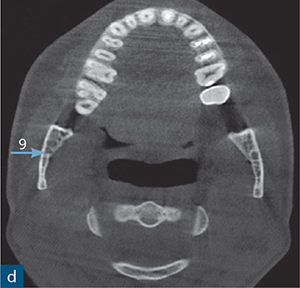


Icd 10 odontoid fracture trial#
USOFT is the first randomised controlled trial comparing non-surgical and surgical management of type-2 odontoid fractures in the elderly. The secondary endpoints are: EQ-5D score, activities of daily living (ADL), bony union, upper cervical stability and mortality. At 12 months, a dynamic radiographical investigation of upper cervical stability is performed. All participants are monitored with regard to the NDI, EuroQol score (EQ-5D), socio-demographics and computed tomography (CT) at the time of injury, at 6 weeks, 3 months and 12 months. The surgical group is treated with a posterior C1–C2 fusion. The non-surgical group is fitted with a rigid cervical collar for 12 weeks. By considering a 1-year mortality forecast of 29%, up to 25 participants are recruited in each group. A minimum of 16 patients are needed in each group to test the superiority with 80% power. The minimal clinically important difference of the NDI is 3.5 points. Excluded are patients with an American Society of Anaesthesiologists (ASA) score ≥ 4, dementia nursing care or anatomical cervical anomalies. Fifty consecutive patients aged ≥ 75 years, with displaced type-2 odontoid fracture, are randomised to non-surgical or surgical treatment. The Uppsala Study on Odontoid Fracture Treatment (USOFT) is a multicentre, open-label, randomised controlled superiority trial evaluating the clinical superiority of the surgical treatment of type-2 odontoid fractures, with a 1-year Neck Disability Index (NDI) as the primary endpoint. Due to the paucity of evidence, the treatment decision is often left to the discretion of the expert surgeon. (The amount of radiation is small–less than the radiation in half of one CT scan.) This scan helps identify damaged bones.Displaced odontoid fractures in the elderly are treated non-surgically with a cervical collar or surgically with C1–C2 fusion. Nuclear bone scan: a diagnostic procedure in which a radioactive substance is injected into the body to measure activity in the bones.CT scans are more detailed than general X-rays. A CT scan shows detailed images of any part of the body, including the bones, muscles, fat, and organs. Computed tomography scan (CT scan): a diagnostic imaging procedure that uses a combination of X-rays and computer technology to produce detailed images of the body.Magnetic resonance imaging (MRI): a diagnostic procedure that uses a combination of large magnets, radiofrequencies, and a computer to produce detailed images of organs and structures within the body.X-rays: test that uses invisible electromagnetic energy beams to produce images of internal tissues, bones, and organs on film.If a Type II Odontoid Fracture is suspected, the doctor may order the following diagnostic procedures: The doctor will take a complete medical history and perform a complete physical examination. This makes them the most likely to require surgery. Type II fractures are considered the least stable of the odontoid fractures. In an unstable fracture, the bone is more likely to move out of its normal position and alignment. A stable fracture may “set” and heal itself. In a stable fracture, the bone does not move out of its normal anatomical position and alignment. Some fractures are considered stable, and some are unstable. In a Type III fracture, the bone is broken below the base of the peg. In a Type II fracture, the most common type, the peg is broken at its base. In a Type I odontoid fracture, just the tip of the bone is broken. In an odontoid fracture, that peg of bone is broken. The odontoid process sticks up from the front of C2 and fits into a groove in C1. It is about the size of the tip of a pinky finger. One of the unique features of this joint is a peg of bone called the odontoid process (sometimes called the dens). This is the joint that allows the head to rotate from side to side, bend forward and bend backward. The joint between C2 and the vertebra above, C1, has an outstanding range of motion. The bone involved in odontoid fracture is the second vertebra, C2, high up in the neck. Odontoid = A peg-like part of the second bone in the neckĪ type II odontoid fracture is a break that occurs through a specific part of C2, the second bone in the neck.īones of the spine are called vertebrae.


 0 kommentar(er)
0 kommentar(er)
